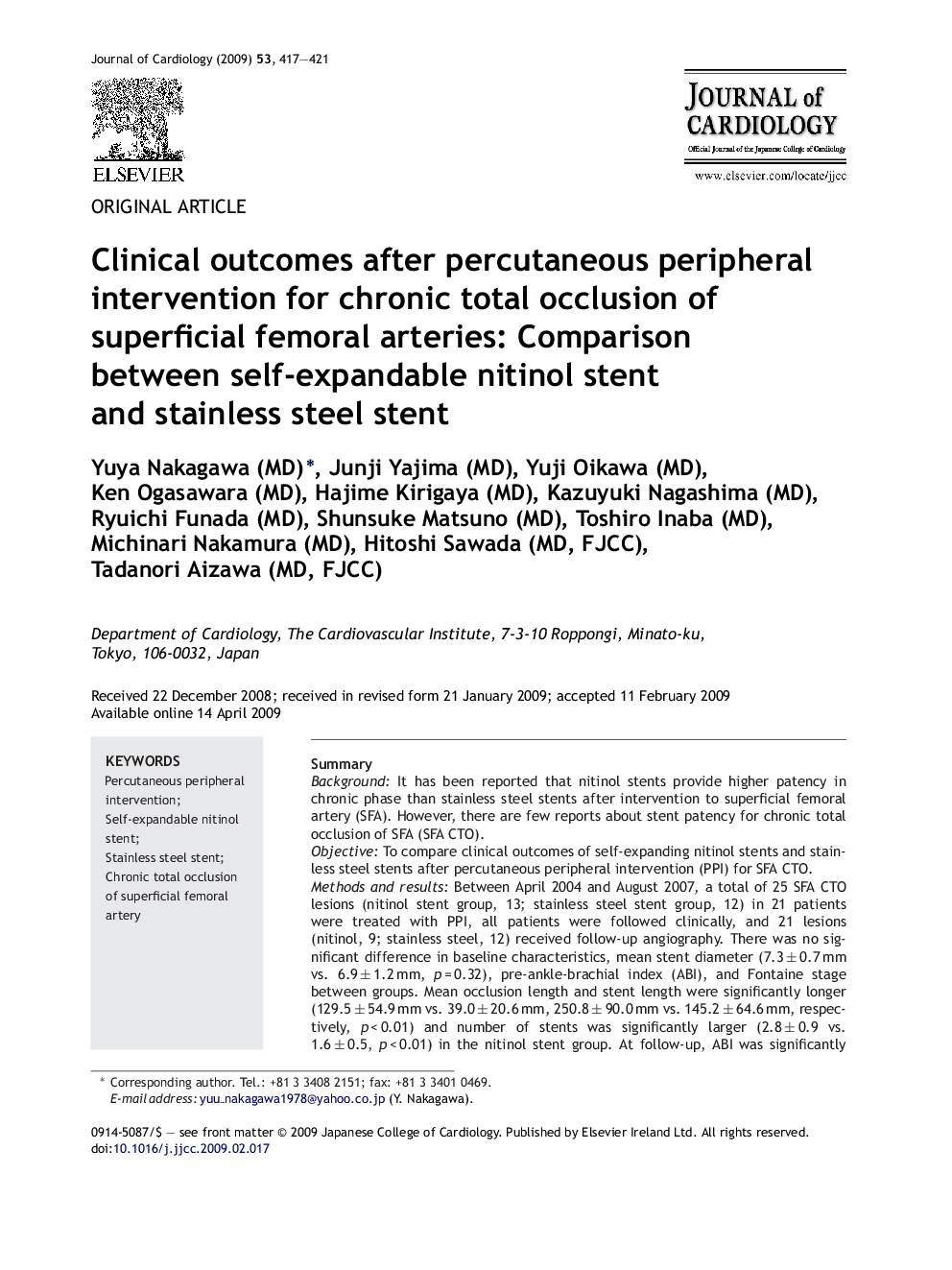| Article ID | Journal | Published Year | Pages | File Type |
|---|---|---|---|---|
| 2963642 | Journal of Cardiology | 2009 | 5 Pages |
SummaryBackgroundIt has been reported that nitinol stents provide higher patency in chronic phase than stainless steel stents after intervention to superficial femoral artery (SFA). However, there are few reports about stent patency for chronic total occlusion of SFA (SFA CTO).ObjectiveTo compare clinical outcomes of self-expanding nitinol stents and stainless steel stents after percutaneous peripheral intervention (PPI) for SFA CTO.Methods and resultsBetween April 2004 and August 2007, a total of 25 SFA CTO lesions (nitinol stent group, 13; stainless steel stent group, 12) in 21 patients were treated with PPI, all patients were followed clinically, and 21 lesions (nitinol, 9; stainless steel, 12) received follow-up angiography. There was no significant difference in baseline characteristics, mean stent diameter (7.3 ± 0.7 mm vs. 6.9 ± 1.2 mm, p = 0.32), pre-ankle-brachial index (ABI), and Fontaine stage between groups. Mean occlusion length and stent length were significantly longer (129.5 ± 54.9 mm vs. 39.0 ± 20.6 mm, 250.8 ± 90.0 mm vs. 145.2 ± 64.6 mm, respectively, p < 0.01) and number of stents was significantly larger (2.8 ± 0.9 vs. 1.6 ± 0.5, p < 0.01) in the nitinol stent group. At follow-up, ABI was significantly lower (0.73 ± 0.20 vs. 0.95 ± 0.13, p = 0.04), restenosis rate and target lesion revascularization was significantly higher (58.3% vs. 15.4%, p = 0.03; 50.0% vs. 7.7%, p = 0.02, respectively) in the stainless steel stent group.ConclusionOur study demonstrates the superiority of nitinol stent implantation compared with stainless steel stent implantation for SFA CTO.
